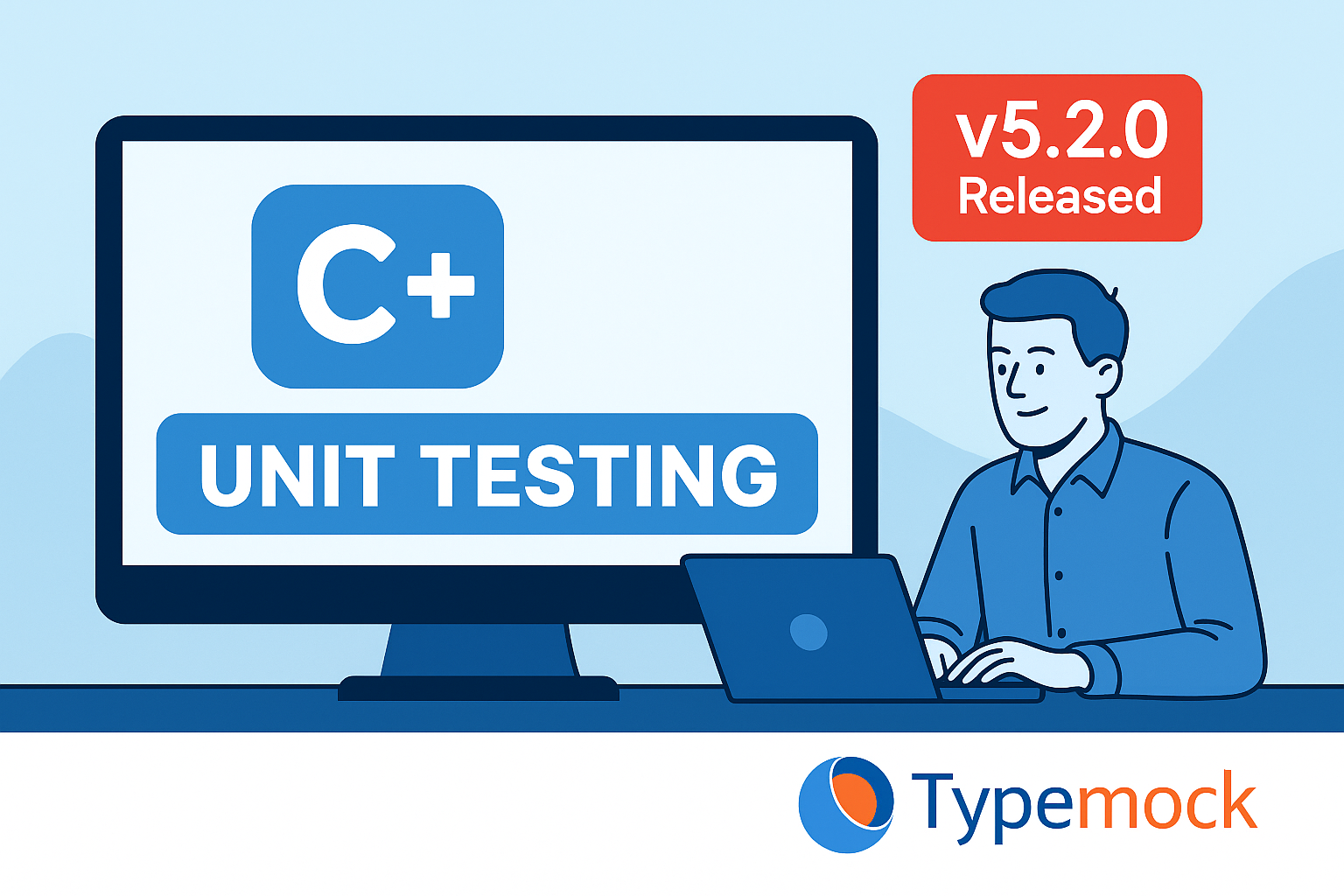NET unit testing is evolving fast thanks to AI. It can now suggest code, refactor methods, and even generate unit tests. So it’s fair to ask: Do developers still need to write them?
In theory, AI-generated tests sound like a productivity dream. But in reality, they’re often brittle, shallow, and miss what matters most.
In 2025, the best teams use AI to assist unit testing in .NET and C++, not replace it. Here’s why hand-crafted unit tests, especially when paired with mocking tools like Typemock, are still essential for delivering clean code in an agile environment.
The Problem With AI-Generated Tests
AI code generators (like GitHub Copilot or ChatGPT) can now produce test scaffolds and simple assertions. But the tests they generate often:
- Mirror the implementation logic (not behavior)
- Don’t cover edge cases
- Are too dependent on specific internal states
- Break on minor refactors
- Most important: when they fail, developers can’t trust the result, and might just regenerate them instead of fixing the real issue
Example: AI-generated .NET unit test
|
1 2 3 4 5 6 7 |
[Test] public void GetDiscountedPrice_ShouldReturnCorrectAmount() { var calc = new PriceCalculator(); var result = calc.GetDiscountedPrice(100); Assert.AreEqual(90, result); } |
What’s wrong with it?
- No mocking or isolation
- No edge case testing
- Breaks if internal discount logic changes
Hand-Written Tests Reflect Real Intent
A human-written unit test reflects business intent. It focuses on behavior, not just outputs. And with the right mocking tools, it becomes resilient to change.
Better version using Typemock Isolator for .NET
|
1 2 3 4 5 6 7 8 9 10 11 |
[Test] public void Should_ReturnDiscountedPrice_WhenCustomerIsPremium() { var userService = Isolate.Fake.Instance<IUserService>(); Isolate.WhenCalled(() => userService.IsPremium("user1")).WillReturn(true); var priceCalc = new PriceCalculator(userService); var result = priceCalc.GetPrice("user1", 100); Assert.AreEqual(90, result); // 10% discount } |
Why this test is better:
- Mocks decision boundaries instead of internal logic
- Decouples implementation, so tests survive refactors
- Clear behavior focus: input, trigger, assert
Smarter .NET Unit Testing with Typemock and AI
The goal isn’t to ignore AI, it’s to guide it. You can:
- Let AI scaffold .NET unit tests
- Then refine with Typemock to isolate dependencies
- Use fake instances to test business logic, not wiring
This hybrid approach saves time and ensures your tests still do their job: give confidence during change.
Real-World Use Case: Unit Testing Legacy Code
Legacy code is where AI often fails. It can’t understand domain logic or hidden dependencies. With Typemock:
- You can mock even static, private, or legacy methods
- Insert tests without rewriting architecture
- Handle untestable code in C++ or .NET
C++ Example with Isolator++ v5
|
1 2 3 4 5 6 7 |
TEST(MyTest, ShouldMockStaticMethod) { Isolate a; a.CallTo(SomeClass::GetValue()).WillReturn(42); int result = MyComponent().Compute(); ASSERT_EQ(result, 42); } |
With Isolator++ v5, you can now mock C/C++ static methods, fake free functions, and simulate member discovery, even for classes without public constructors. These are deep capabilities AI-generated tests can’t reliably handle yet.
Conclusion: Don’t Let AI Replace Your Judgment
Unit tests aren’t just checks, they’re contracts, documentation, and safety nets for your CI/CD pipeline.
AI can help you move faster, but only human insight ensures you test the right things. With Typemock, you can:
- Write fewer, stronger tests
- Mock what matters
- Keep test quality high even as code evolves
Ready to test smarter?
Try Typemock for .NET or C++ or Typemock for C/C++ and bring confidence back to your development process.




